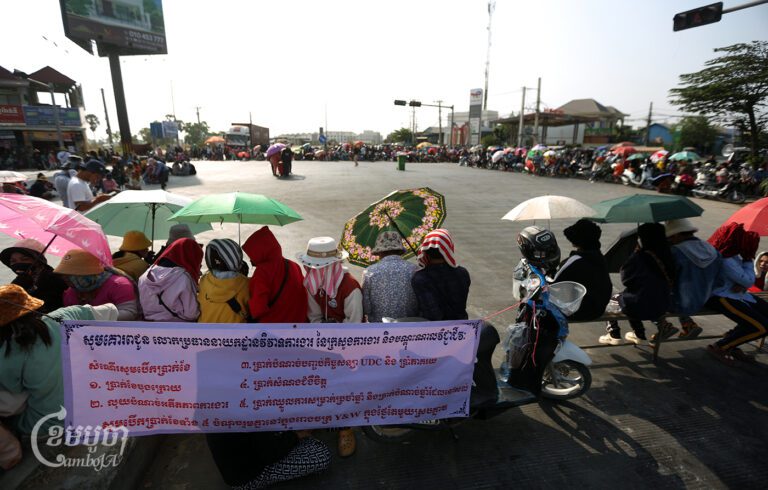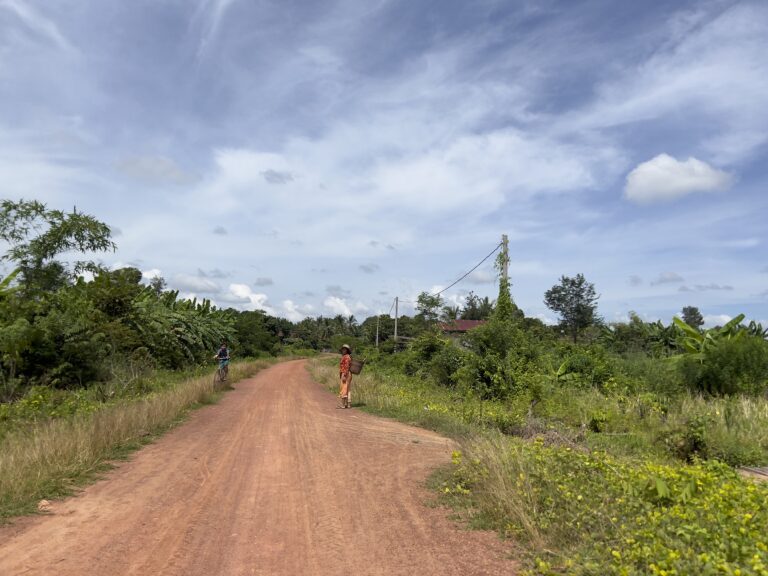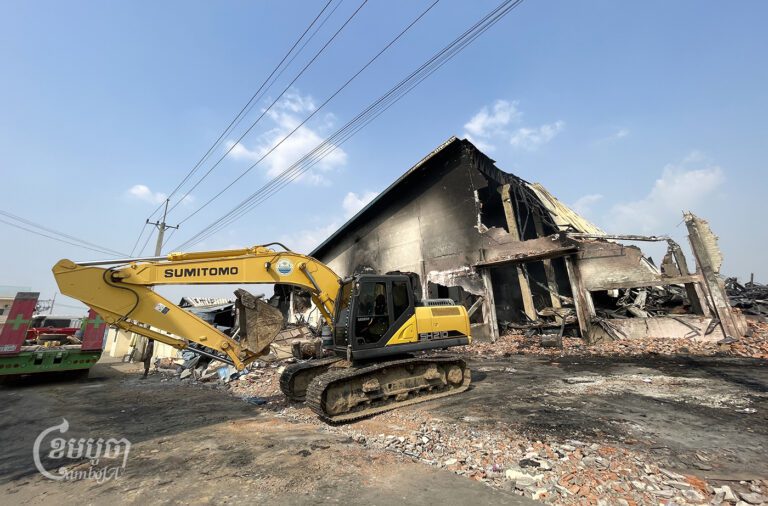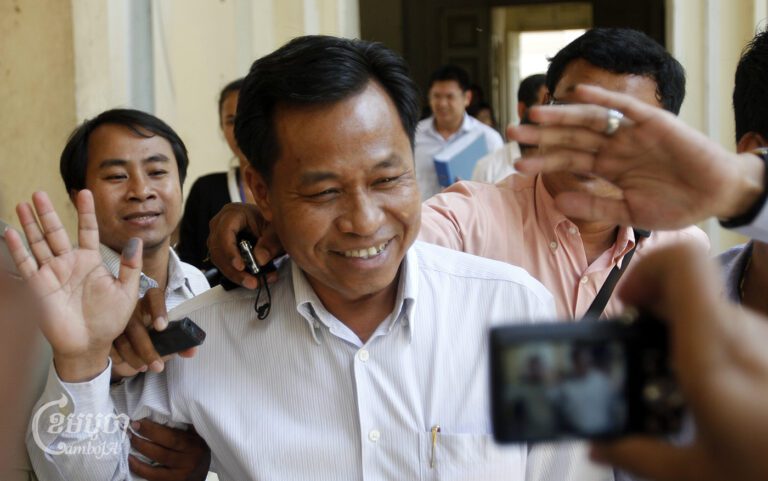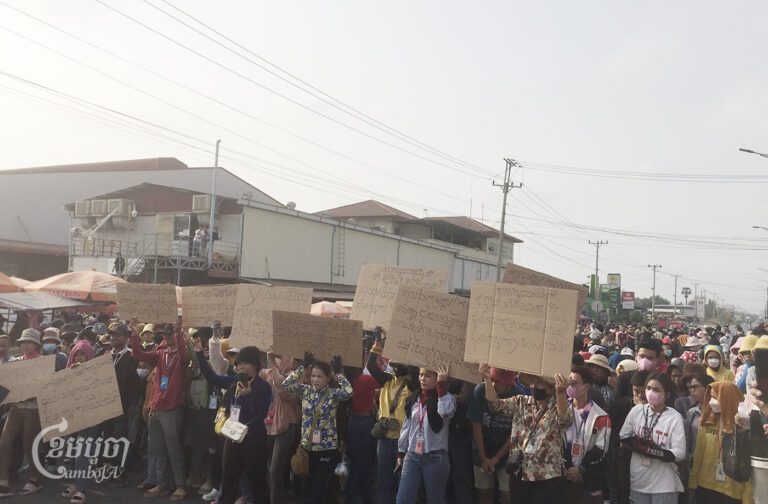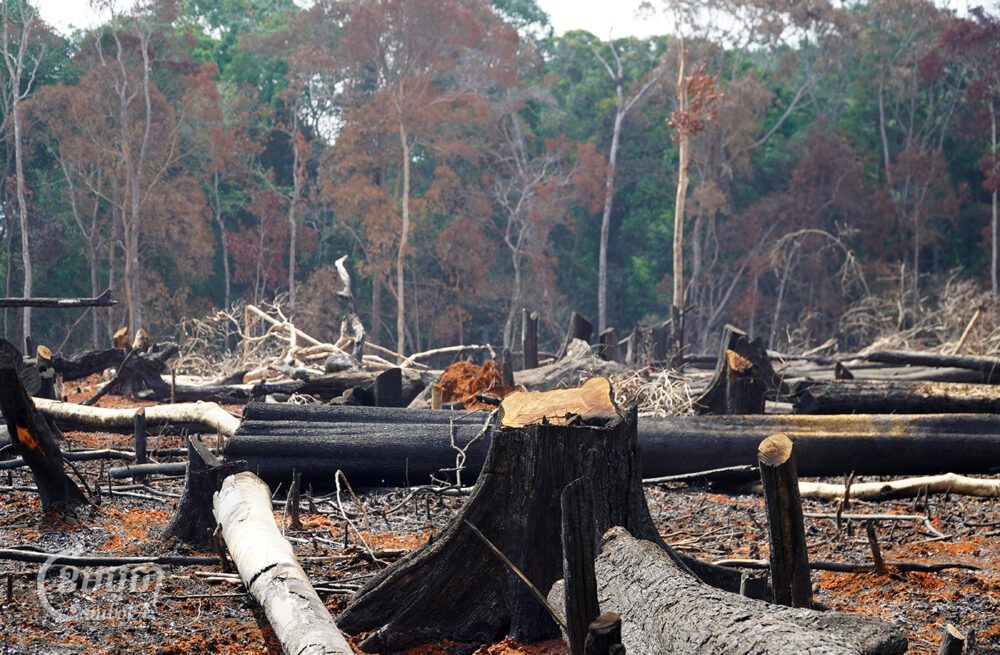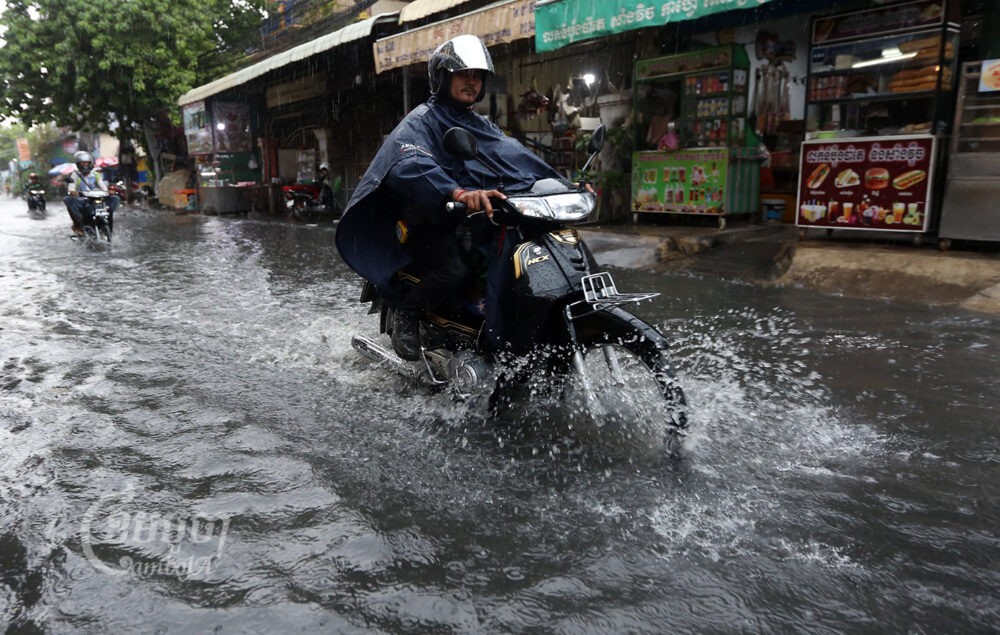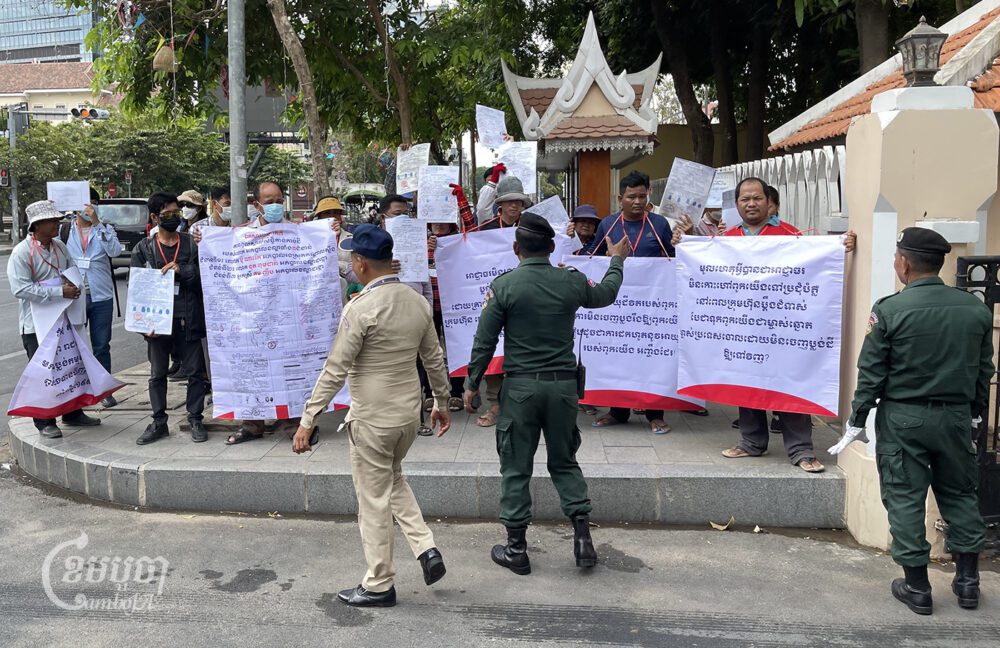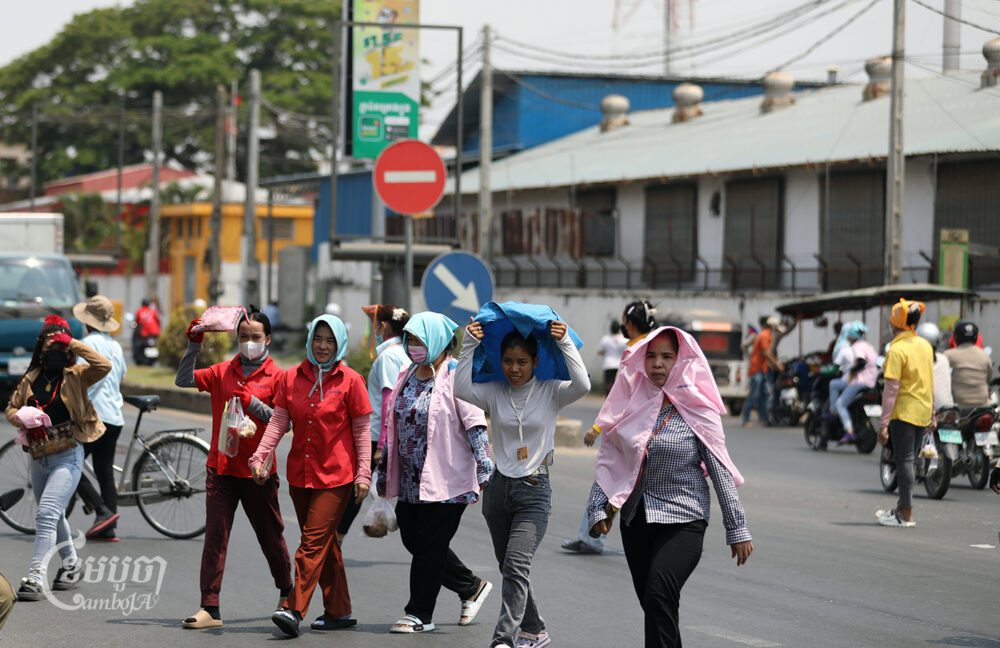Behind a KTV club in Tuol Sangke commune, Ly Thary spends her days selling drinks and groceries in front of her rented room.
But the single mother of three from Kampong Cham has struggled to provide for her family after the garment factory where she worked for 13 years closed in mid-January, along with dozens of others this year, drastically reducing her income.
Thary used to earn around $400 monthly at her garment factory job, now she scrapes by with $75 a month and has had to send her teenage daughter away to work as a maid to supplement family income.
“Within these two months, I have spent all my savings, selling jewelry to pay back a loan,” Thary said “I relied on the garment factory for years to live and it made my livelihood better, but now I am struggling again. It made me lose everything.”
She received only one month of wages as compensation for the factory’s closure, in violation of Cambodian labor laws. (The factory’s owner could not be reached for comment).
“I thought that when the factory closed, I would be suitably compensated but finally, after working for more than 10 years, I got nothing,” she added.

Thary’s employer, Lim Line International (Cambodia) Garment Co., Ltd, was one of 71 factories which closed or suspended operations between January and February this year, affecting more than 32,000 workers. In 2022, 490 factories were closed or suspended, affecting about 40,000 workers, according to the Cambodian Labour Confederation.
Cambodia’s garment industry employs more than 700,000 people — the vast majority of workers having migrated from rural areas to take jobs in the city, most in Phnom Penh.
The Council for the Development of Cambodia (CDC) has approved at least 23 new garment and footwear investment projects, expected to create thousands of jobs. CDC data posted on Facebook shows an estimated total investment value of $168 million.
Despite the signs of recent investment into the garment industry, tens of thousands of laid off and suspended workers remain in a precarious and uncertain situation following the mass closures and suspension of factories, workers and union leaders say.
While the Covid-19 pandemic and war in Ukraine have negatively impacted the global economy, Ath Thorn, president of the Cambodian Labour Confederation, one of Cambodia’s biggest independent unions with more than 110,000 members, said an additional reason for the closures is uncertainty surrounding Cambodia’s future access to duty-free trade agreements for exports to the U.S. and European markets.
In 2020, the European Union withdrew approximately 20% of its “Everything But Arms” (EBA) agreement for Cambodia due to widespread human rights violations. The same year, the U.S. Generalized System of Preferences (GSP) was allowed to lapse and has yet to be renewed. Cambodia’s largest exports to the U.S. have been garments, footwear and travel goods, according to the U.S. Census Bureau.
In March, the EU parliament passed a resolution calling for an end to political persecution and a release of political prisoners in Cambodia and warned that further withdrawals of EBA could follow if the political environment did not improve prior to the July national elections. Top leaders for the leading opposition party have already faced arrest and steep fines.
“Orders were reduced due to the uncertainty in Cambodia’s access to EBA, the US’ GSP and the national election in July,” Thorn said. “I met with buyers and they told that they will inform me about the new decision [to order] after the election.”
Thorn said the competition with Vietnam, which has secured bilateral trade with the EU in 2019, is another obstacle for Cambodia’s garment industry.
Thorn blamed the factories’ closure due to the lack of law enforcement and on companies seeking to avoid responsibility for long-time employees, many of whom have been kept on short-term contracts to minimize legal severance benefits.

The government’s investment policy has allowed new investors to avoid paying taxes for five years, which Thorn argues encourages many companies to close and then re-open under a new name. While companies are allowed to suspend operations for two months, in reality they can continue to stay suspended for longer, he claimed.
Ministry of Labor spokesperson Heng Sour did not respond to requests for comment.
The government also promised cash support, $30 from the employer and $40 from the government, for garment workers affected by job suspensions and a program of cash support recently launched, said Kaing Monika, Deputy Secretary General of the Garment Manufacturers Association of Cambodia.
“There has been a partial production halt, and other countries face similar situations due to the result of the war,” Monika said, adding that the government will conduct an assessment of the situation in the next three months.
“We will seek more support from the government if the situation worsens,” Monika said. “We hope that the situation will improve in the second half [of the year].”
For workers who have resumed their jobs after factory suspensions, their future employment feels uncertain. Some factories have since resumed but others remain indefinitely suspended.
Soeun Yeak, 46, said she has struggled to find a new job after Lim Line International’s closure. She borrowed money at a high interest rate from a private lender to buy a motor cart to sell desserts on the street at Phnom Penh.
“I looked for a job at another factory, but they did not accept me, they told me I was too old to work in the factory,” she said. “I could earn 20,000 riel ($5) per day from selling desserts and I have not sent money to my niece for two months.”

Yin Yom, 40, returned to work at Yarkjin (Cambodia) Inc. after one week of suspension and faces steep monthly microfinance repayments to pay back the cost of a new house. Along with her son and daughter’s slim incomes from motor repair work and vegetable selling, they can just afford to meet the repayments and keep a roof over their heads.
“The concern is having no money to pay back loans, I rely on the job in the garment factory to pay back loans, without the job, I have nothing to do,” said Yom, who earns $300 a month from the factory but has to spend $450 a month on her loan repayment.
Thary, who remains out of work, also faces pressing loan repayments and a cost of living higher than her new job. She borrowed $2,000 from a microfinance institution to build a new house several months before the factory closed, and must also spend $100 on her rent, utilities and electricity and $100 on loan repayments.
“My daily livelihood rely on garment factory because it had changed my life better,” Thary said. “If I cannot find a job, I may leave for my hometown because living in the city costs a lot.”
(Additional reporting by Phon Sotthyroth)



